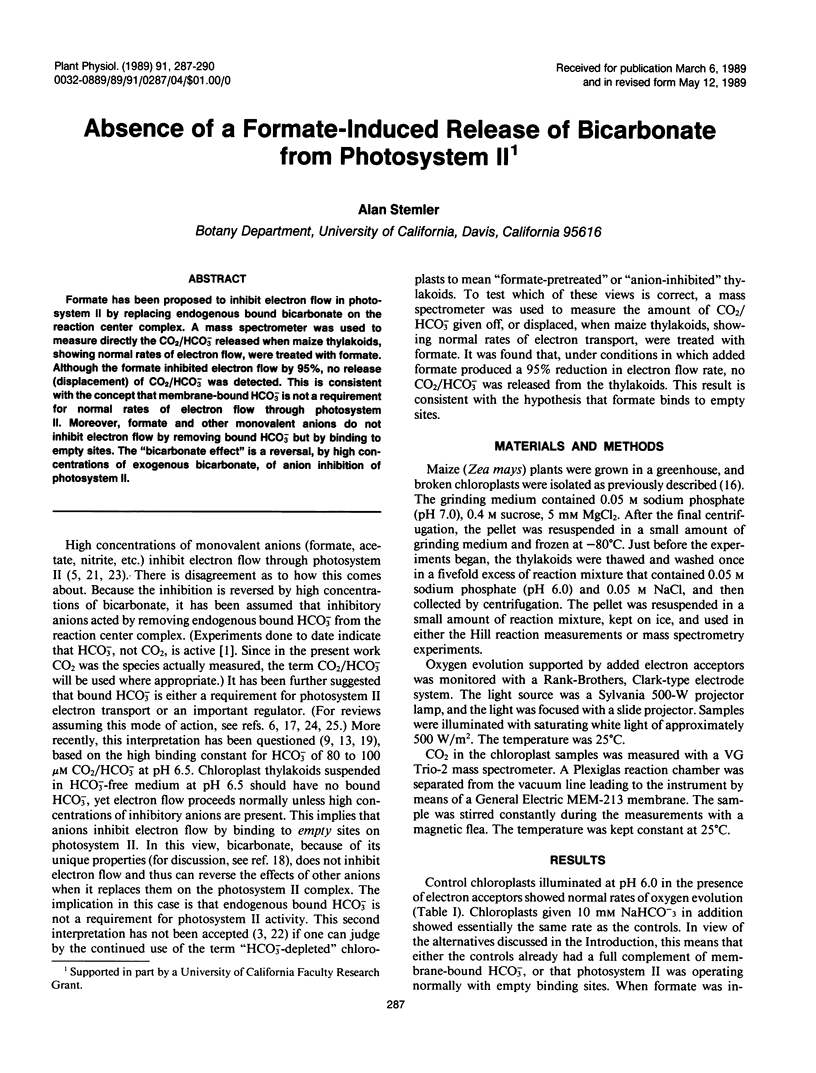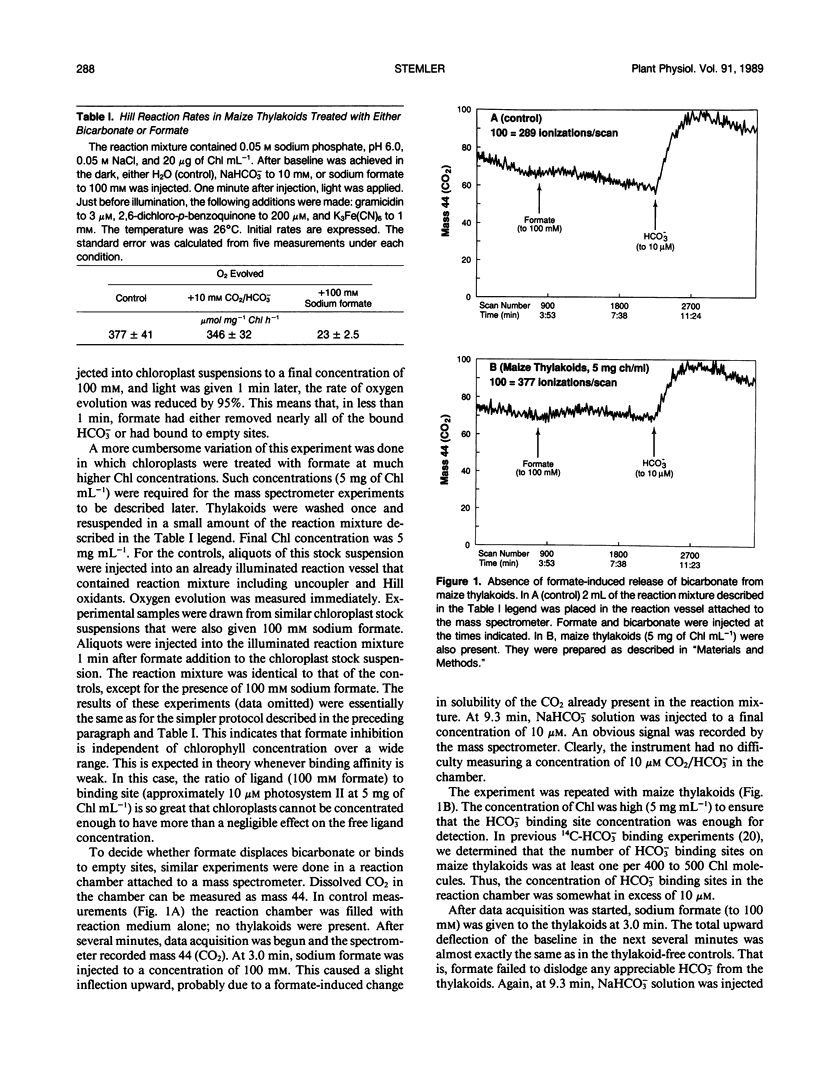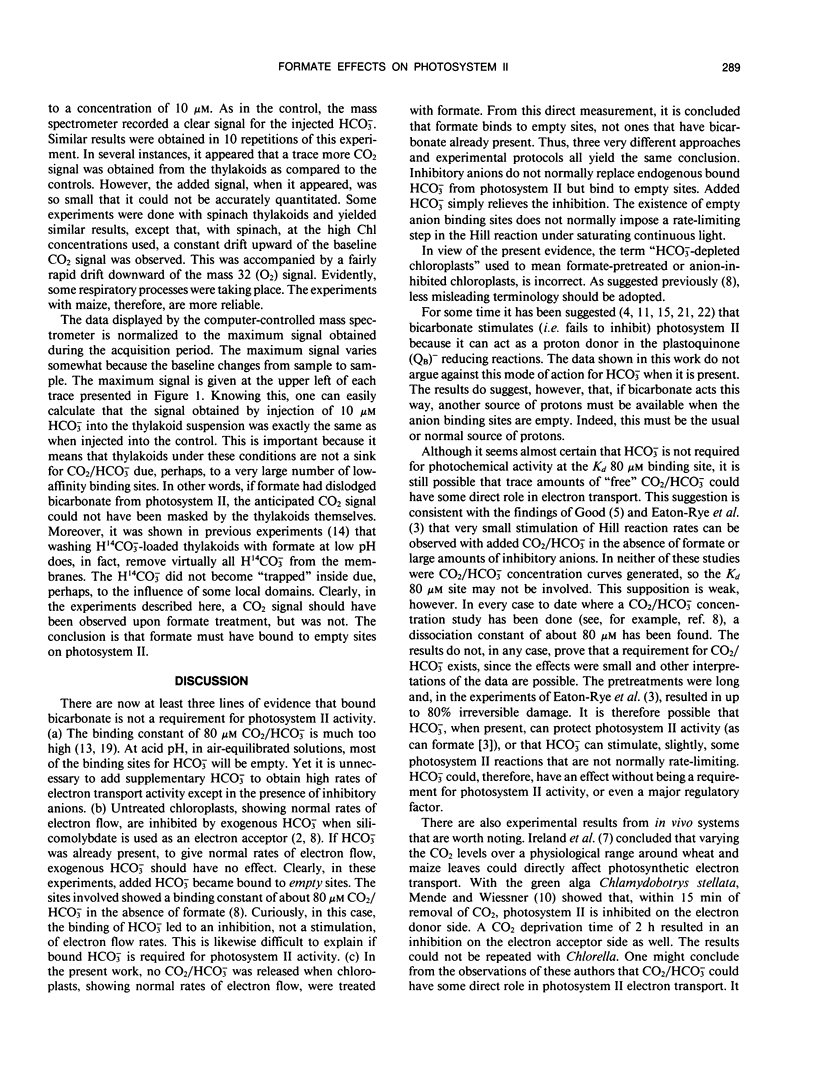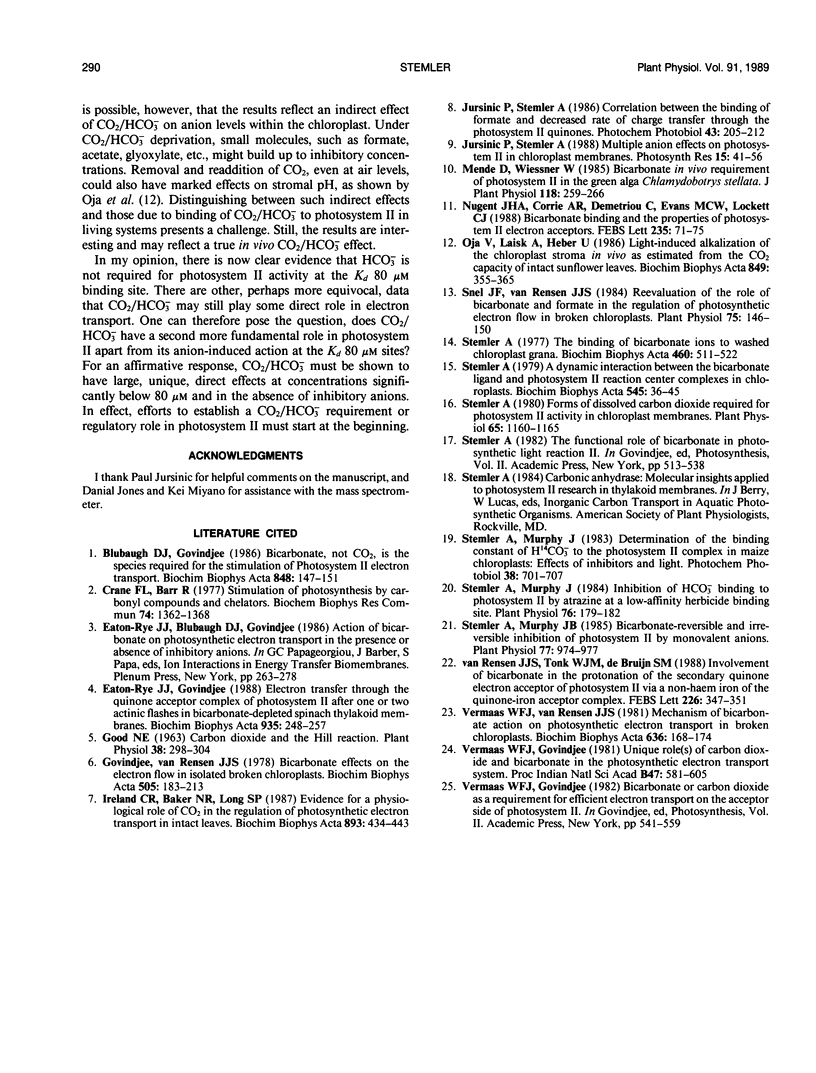Abstract
Formate has been proposed to inhibit electron flow in photosystem II by replacing endogenous bound bicarbonate on the reaction center complex. A mass spectrometer was used to measure directly the CO2/HCO3− released when maize thylakoids, showing normal rates of electron flow, were treated with formate. Although the formate inhibited electron flow by 95%, no release (displacement) of CO2/HCO3− was detected. This is consistent with the concept that membrane-bound HCO3− is not a requirement for normal rates of electron flow through photosystem II. Moreover, formate and other monovalent anions do not inhibit electron flow by removing bound HCO3− but by binding to empty sites. The “bicarbonate effect” is a reversal, by high concentrations of exogenous bicarbonate, of anion inhibition of photosystem II.
Full text
PDF



Selected References
These references are in PubMed. This may not be the complete list of references from this article.
- Blubaugh D. J., Govindjee Bicarbonate, not CO2, is the species required for the stimulation of Photosystem II electron transport. Biochim Biophys Acta. 1986 Jan 28;848(1):147–151. doi: 10.1016/0005-2728(86)90170-2. [DOI] [PubMed] [Google Scholar]
- Crane F. L., Barr R. Stimulation of photosynthesis by carbonyl compounds and chelators. Biochem Biophys Res Commun. 1977 Feb 21;74(4):1362–1368. doi: 10.1016/0006-291x(77)90592-7. [DOI] [PubMed] [Google Scholar]
- Good N. E. Carbon Dioxide & the Hill Reaction. Plant Physiol. 1963 May;38(3):298–304. doi: 10.1104/pp.38.3.298. [DOI] [PMC free article] [PubMed] [Google Scholar]
- Govindjee, van Rensen J. J. Bicarbonate effects on the electron flow in isolated broken chloroplasts. Biochim Biophys Acta. 1978 Oct 23;505(2):183–213. doi: 10.1016/0304-4173(78)90012-5. [DOI] [PubMed] [Google Scholar]
- Snel J. F., van Rensen J. J. Reevaluation of the role of bicarbonate and formate in the regulation of photosynthetic electron flow in broken chloroplasts. Plant Physiol. 1984 May;75(1):146–150. doi: 10.1104/pp.75.1.146. [DOI] [PMC free article] [PubMed] [Google Scholar]
- Stemler A. A dynamic interaction between the bicarbonate ligand and photosystem II reaction center complexes in chloroplasts. Biochim Biophys Acta. 1979 Jan 11;545(1):36–45. doi: 10.1016/0005-2728(79)90111-7. [DOI] [PubMed] [Google Scholar]
- Stemler A. Forms of Dissolved Carbon Dioxide Required for Photosystem II Activity in Chloroplast Membranes. Plant Physiol. 1980 Jun;65(6):1160–1165. doi: 10.1104/pp.65.6.1160. [DOI] [PMC free article] [PubMed] [Google Scholar]
- Stemler A., Murphy J. B. Bicarbonate-Reversible and Irreversible Inhibition of Photosystem II by Monovalent Anions. Plant Physiol. 1985 Apr;77(4):974–977. doi: 10.1104/pp.77.4.974. [DOI] [PMC free article] [PubMed] [Google Scholar]
- Stemler A. The binding of bicarbonate ions to washed chloroplast grana. Biochim Biophys Acta. 1977 Jun 9;460(3):511–522. doi: 10.1016/0005-2728(77)90089-5. [DOI] [PubMed] [Google Scholar]
- Vermaas W. F., Van Rensen J. J. Mechanism of bicarbonate action on photosynthetic electron transport in broken chloroplasts. Biochim Biophys Acta. 1981 Jul;636(2):168–174. doi: 10.1016/0005-2728(81)90090-6. [DOI] [PubMed] [Google Scholar]


